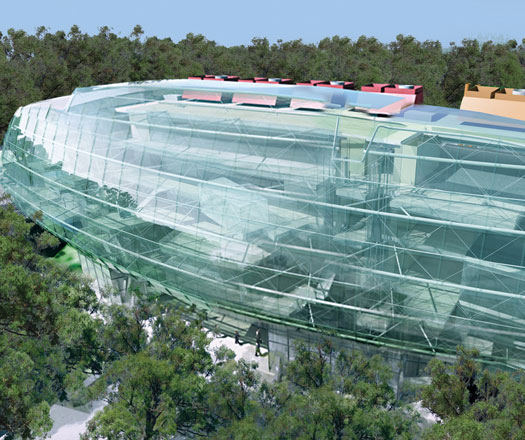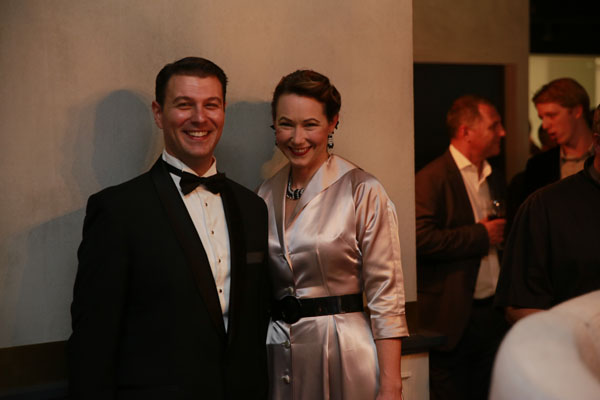Ingrid Fuary-Wagner introduces Australia’s first zero-emission and self-powering teaching and research building.
June 22nd, 2010
Australian architecture firm Cox Rayner has designed what will be the country’s first zero-emission and self-powered teaching and research building driven by solar-powered hydrogen energy.
The $32 million Sir Samuel Griffith Building will be built just south of Brisbane in Nathan, one of Griffith University’s satellite campuses.
The solar-panelled glass façade will generate its own power supply while at the same time flaunting its skeletal structure and the 4000m² of usable floor space across its six levels.
What looks like an outlandish blimp-like structure from one angle, the building will include natural ventilation, grey water recycling and advanced water collection.
According to Griffith University’s Vice-Chancellor, the world-class building will offer inspiration to both Australian and overseas communities interested in genuine sustainable energy options.
“This building, which will generate its own power supply, is a model for remote communities that are ‘off-grid’ and cannot access power in Australia and across the world,” Professor O’Connor said.
A $22 million grant from the Australian government will assist in its construction as part of the government’s Education Revolution initiative, aimed at encouraging world-leading infrastructure investments that will transform Australian tertiary education and research.
Cox Rayner
cox.com.au

A searchable and comprehensive guide for specifying leading products and their suppliers
Keep up to date with the latest and greatest from our industry BFF's!

Savage Design’s approach to understanding the relationship between design concepts and user experience, particularly with metalwork, transcends traditional boundaries, blending timeless craftsmanship with digital innovation to create enduring elegance in objects, furnishings, and door furniture.

Create a configuration to suit your needs with this curved collection.

Marylou Cafaro’s first trendjournal sparked a powerful, decades-long movement in joinery designs and finishes which eventually saw Australian design develop its independence and characteristic style. Now, polytec offers all-new insights into the future of Australian design.

Sub-Zero and Wolf’s prestigious Kitchen Design Contest (KDC) has celebrated the very best in kitchen innovation and aesthetics for three decades now. Recognising premier kitchen design professionals from around the globe, the KDC facilitates innovation, style and functionality that pushes boundaries.
Mikal Hallstrup tells us why a user-centric approach to design that embraces technology and improves lives makes good business sense.
Principal at HASSELL and Director of design studio Sheargold, Matthew Sheargold divides his time between interior, product and furniture design. Sheargold took 5 minutes to tell Indesignlive about his design favourites and inspirations – from Alexander McQueen to the Eames and beyond.

Inspired by the hanami season in Japan, Wagaya is an immersive space designed to capture the sensory experience of sitting beneath the cherry blossom trees.

VIP guests representing industries from design, government, CRE, aviation, financial services to communications gathered for the long awaited launch of the Porter, Haworth’s unique collaboration with xFriends partners to experiment with a new type of space.
The internet never sleeps! Here's the stuff you might have missed

DKO’s Interior Design Director on how to create community and specificity in interior design, and how apartment living is being reconceptualised.

The AIA Alta Wellness Haven offers the complete package for health and wellbeing away from the busy city life in Hong Kong and does it through a stellar interior design.